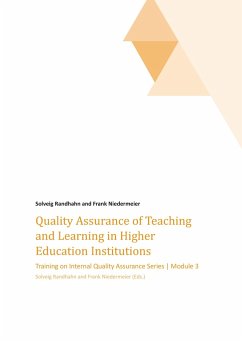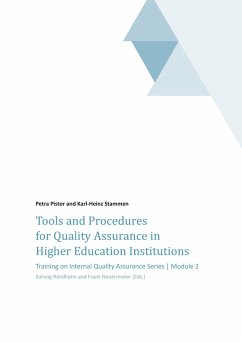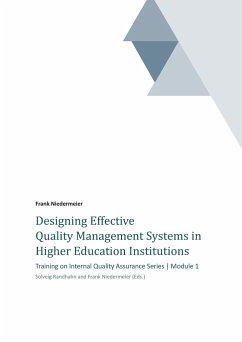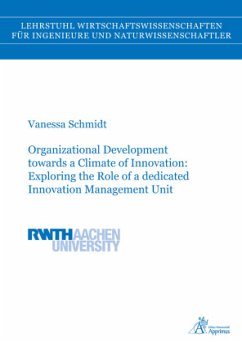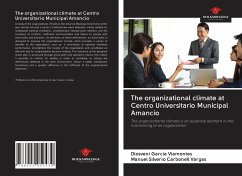
Organizational Climate at Higher Education Institutions
Perceived by Leaders Participating in the Academic Quality Improvement Program
Versandkostenfrei!
Versandfertig in 6-10 Tagen
45,99 €
inkl. MwSt.

PAYBACK Punkte
23 °P sammeln!
This foundational research identified and applied asurvey instrument to measure organizational climatefactors as perceived by leaders of higher educationinstitutions participating in the AcademicQuality Improvement Program (AQIP). AQIP is analternate process for maintaining regionalinstitutional accreditation by the Higher LearningCommission of the North Central Association ofColleges and Schools. The AQIP process incorporatesconcepts of continual quality improvement, systemsthinking, organizational learning, mental models,involvement, development of human resources,appreciative inquiry, and d...
This foundational research identified and applied a
survey instrument to measure organizational climate
factors as perceived by leaders of higher education
institutions participating in the Academic
Quality Improvement Program (AQIP). AQIP is an
alternate process for maintaining regional
institutional accreditation by the Higher Learning
Commission of the North Central Association of
Colleges and Schools. The AQIP process incorporates
concepts of continual quality improvement, systems
thinking, organizational learning, mental models,
involvement, development of human resources,
appreciative inquiry, and dialogue. The
organizational climate survey instrument used in this
research measured factors related to the AQIP
categories and principles. The organizational climate
factors were: conflict resolution, culture
management, customer orientation, disposition towards
change, employee participation, goal clarity, human
resources orientation, identification with the
organization, locus of authority, management style,
organization focus, organization integration,
performance orientation, reward orientation, and task
structure.
survey instrument to measure organizational climate
factors as perceived by leaders of higher education
institutions participating in the Academic
Quality Improvement Program (AQIP). AQIP is an
alternate process for maintaining regional
institutional accreditation by the Higher Learning
Commission of the North Central Association of
Colleges and Schools. The AQIP process incorporates
concepts of continual quality improvement, systems
thinking, organizational learning, mental models,
involvement, development of human resources,
appreciative inquiry, and dialogue. The
organizational climate survey instrument used in this
research measured factors related to the AQIP
categories and principles. The organizational climate
factors were: conflict resolution, culture
management, customer orientation, disposition towards
change, employee participation, goal clarity, human
resources orientation, identification with the
organization, locus of authority, management style,
organization focus, organization integration,
performance orientation, reward orientation, and task
structure.




